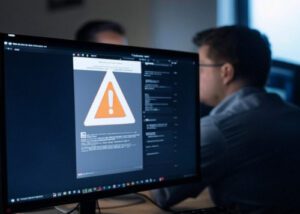There are a lot of new and improved tools and technologies in healthcare — a wonderful display of people working to make the world of healthcare better for patients and your organization’s staff. But sometimes, no matter how helpful and useful a piece of technology can be for your organization, it might not be compatible with your existing technologies. Today, we are going to narrow our focus on integrating RCM software with existing electronic health record (EHR) systems.
We reached out to our brilliant Healthcare IT Today Community to ask — what are the main challenges in integrating RCM software with existing EHR systems, and how can these be addressed? The following are their answers.
Laxmi Patel, Chief Strategy Officer at Savista
Before integrating RCM software with existing EHR systems, you’ll want to conduct a gap analysis to fully understand, audit, and document your existing workflows to understand where you need process optimization. Map these out to fully understand how and where data currently flows, which departments need access to what data, and how your staff are currently using your systems and processes today.
You’ll need to make sure your data is secure and that data safety protocols are documented, published, and consistently implemented across your organization. It’s also essential you have the right level of staffing to use the platform, the right certified technical/application support to maintain the platform and troubleshoot, as well as thorough end-user training. Regular and refresher courses are useful to onboard new employees and to ensure workflows are consistently being followed.
Florian Otto, Co-Founder and CEO at Cedar
Health systems — especially RCM and finance teams — are facing urgent challenges, including rising labor costs, staffing shortages, and pressure to improve patient experience while managing operational overhead. We recently conducted a call center assessment with an Academic Medical Center and discovered something shocking: 97% of calls were from patients with questions or concerns about their bills. The current approach to high call volumes is hiring more staff, but hiring more representatives doesn’t address the root cause, which is that patients are calling because they don’t have clear, real-time answers. The advent of Agentic AI will allow providers to go a level deeper by connecting patients with additional resources and information about coverage, discounts, and financial assistance.
Ritesh Ramesh, CEO at MDaudit
Many teams don’t spend lots of time mapping out the business needs and then architecting the integration and interoperability needs with EHR. I have seen many talk about APIs when it’s not a business need and many don’t implement APIs when it’s exactly a business requirement. EHR vendors have been talking about interoperability for years, but recent regulatory changes have mandated them to be more transparent with their API and data specifications. IT bandwidth, lack of system documentation and less agility to integrate multiple systems are some of the major challenges within healthcare. Many healthcare organizations also have staffing and labor issues with IT.
Cheryl Taylor, Vice President, RCM Advisory at Cognizant
A significant challenge in integrating RCM software with existing EHR systems is the lack of data standardization, which results in unique integration patterns across various systems. Healthcare data standards like HL7 FHIR have helped bridge this gap. Interoperability also poses a challenge. Although many EHRs have transitioned to using real-time APIs, some providers are still in the process of transformation. In the interim, building integrations without standardized APIs can be difficult.
Additionally, while RCM workflows such as claims management, denial management, and prior authorization are generally similar across different providers, there are specific differences that need to be addressed with each new implementation. Newer protocols like MCP (Model Context Protocol) offer a breakthrough approach by enabling AI agents to understand and process diverse system contexts without system-specific programming, allowing them to effectively navigate between different platforms while maintaining workflow continuity across the healthcare ecosystem.
Sajeed Chowdhury, Director, Transformation and Innovation Services at Nordic
Integrating RCM software with EHR systems poses issues like data errors, limited interoperability, and workflow disruptions. Most of these challenges can be addressed by using APIs, ensuring accurate data mapping, involving clinical and billing teams early, and maintaining close collaboration with vendors and strategic partners. Ongoing training also helps staff adapt and maintain efficiency.
Jessica Wagner, Chief Operating Officer at RXNT
Integrating fragmented healthcare software can be a challenge because of data inconsistencies, technical incompatibility, and workflow disruptions. Healthcare software solutions are not meant to work in silos; when they do, it often results in outdated processes, incomplete patient information, and increased administrative workload. These issues can be addressed by choosing systems built for easy interoperability.
To send a claim, extensive detail is required, including patient demographics, patient insurance, charge details, and more. By nature, this makes an RCM system very relational, and all of the pieces have to work together seamlessly to send a clean claim. Standalone clinical systems aren’t designed with claims in mind, and often don’t contain enough information for claim creation, so the biller is responsible for any missing details. Intuitive, connected software helps practices seamlessly streamline workflows while connecting all of the pieces. Getting the full picture—including patient demographics, insurance information, visit information, payer rules and agreements, and more—requires technical expertise, and many fragmented systems don’t contain enough information to tell the full story on their own.
Vlad Panin, Founder and CEO at iFrame.AI
Think of integrating RCM with EHR, such as reviewing a patient chart written in both Latin and shorthand. That’s the reality for almost 7 in 10 healthcare teams struggling with disconnected systems. Implementation of solutions from popular brands often means an upfront cost of $1.2 million and more than 120 hours of staff training. It’s still a solid investment, clearly saving money in the future, yet the cost of tech adoption—often defined by monopolies—is too high.
Like prepping for boards, mapping workflows first can cut that “residency” by nearly half and help everyone feel less paged out. Security is another chronic concern, but first, we have to define what security means. For private practice, it probably has the most grounded meaning – actually, prevention of data leaks.
However, for larger hospitals, it’s far from the whole truth. For large institutions, “security” is more about who is responsible if something happens. So, instead of stress-testing software, they simply choose to work with large corporations. That way, if the entire system is down and 100 million patient records are lost – as happened in Q1 2024 – over $20 million in ransom will be paid, experienced legal teams will make sure no one is held responsible, and you’re left feeling fairly confident no one will come after your practice. The downside is that you are always in a position to pray and likely receive access to technology only after such a large corporation acquires a proper tech company. For those who care more about actual damage prevention and are more open to technology adoption, the connection of modern AI software can drop denials by 30%, letting clinicians focus less on billing drama and more on care.
So many great answers here! Huge thank you to everyone who took the time out of their day to submit a quote! And thank you to all of you for taking the time out of your day to read this article! We could not do this without all of your support.
What do you think are the main challenges in integrating RCM software with existing electronic health record (EHR) systems, and how can these be addressed? Let us know over on social media, we’d love to hear from all of you!



